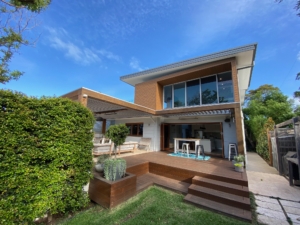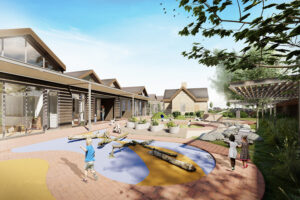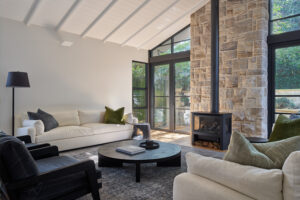Nowadays, the well-used term ‘sustainability’ appears as a marketing label for promotion and advertising. What does it mean? How can we use sustainability with intelligence to create an outstanding design?
In ecology, sustainability is how biological systems remain diverse and productive. Healthy and long-lived wetlands and forests are examples of sustainable biological systems. Generally, it is the balanced endurance of systems and processes. Therefore, it is far deeper and more complex than most of us realise.
The organising principle for sustainability is sustainable development, which includes the four interconnected domains: ecology, economics, politics and culture.
Wellbeing is a general term for the condition of an individual or group, for example, their social, economic, psychological, spiritual or medical state. High wellbeing means that, in some sense, the individual or group’s experience is positive, while low wellbeing is associated with negative happenings. To maintain balance, it is essential to reflect on sustainable architectural design as a part of our wellbeing.
How do we create a sustainable design for engineering wellbeing?
Part of the sustainability journey is creating a space that heightens wellbeing. How do we create sustainable design to engineer our wellbeing?
The factors to consider include:
- The site and its unique features.
- The client’s lifestyle.
- What creates joy for the client?
- Do the clients see their space/ home, as a place of refuge, or a gathering space for social interactions?
- Choice of materials: will they have negative or positive impact on the environment? Natural materials, like rammed earth, CLT (cross-laminated timber) and wood flooring are not only visually and texturally appealing, they are inherently very low emitters of volatile organic compounds. To reduce exposure to these harmful gases, choose natural materials and finishes.
- Wherever possible, minimise site excavation to lessen the environmental impact.
- Well-designed spaces that do more with less, reducing our footprint and energy consumption.
- Utilising the surrounding environment to introduce green walls and permaculture into the design.
- Efficient design layouts.
- Harvesting the energy of the sun with passive/solar design and solar panels.
- Leveraging orientation and window placement to enhance our wellbeing with optimal levels of natural light throughout the home.
- Building in cross ventilation to capture prevailing breezes and clear stagnant air. Freely circulating air flow is vital to indoor air quality as it helps reduce moisture, pollutants and excess carbon dioxide. Fresh air helps keep us healthy and happy, it lifts our mood and provides the oxygen we need to keep us physically and mentally fit.
These are just some of the ways architectural design can promote wellness in our built and natural environment.
Where to next?
The ancient practice of intuitive land readings can help us develop a deeper understanding of a proposed site. By training ourselves to hear the land’s timeless rhythm we can produce designs in perfect harmony with their earthly setting.
When we incorporate true sustainability into architecture and design, our built environment can engineer wellness – for mind, body and soul.







